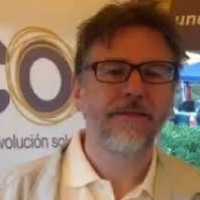Preprint
Article
Anthropocene: Does the New Geological Age push towards a Metamorphosis of the World
This version is not peer-reviewed.
Submitted:
28 September 2021
Posted:
30 September 2021
You are already at the latest version
Abstract
The Anthropocene has created a new cartography. Various disciplines and discourses overlap each other. Two fields of knowledge: geology and anthropology are unified in one single concept. The Axial Age separated everyday practices from an unbiased and objective view of the world. Romanticism, in the nineteenth century, challenged the separation between the natural sciences and the sciences of the spirit. Paul J. Crutzen and Eugene Stoermer had two distinct parts; a first establishes "a period of time" the second an "epistemic tool". This paper is intended to illustrate the epistemological dimension of the Anthropocene. The Anthropocene defines the present geological epoch as dominated by humans. Eduard Suess, Antonio Stopani, Teilhard de Chardin, Vladimir Vernadsky etc., a century ago, anticipated the concept of Anthropocene. "Noösphere" is a term from the "world of thought". The hypothesis of an earth as a living organism, which is inspired by J.W. Goethe's "Naturwissenschaft", allows two disciplines to be inte-grated into one term: geology and anthropology. We have atmospheric phenomena that are in-compressible without presupposing life. The Anthropocene modifies the foundations of our vi-sion of the world. In the Gaia Hypothesis we find the same roots as in the Anthropocene concept: Goethe, Vernadky, etc. The concepts of symbiogenesis, homeostasis, etc., allow us to formulate new questions. This paper analyzes the reconfiguration of relations between the earth and all its inhabitants. It is, for the social sciences, a challenge: a metamorphosis of our vision of the world is taking place.
Keywords:
Subject:
Social Sciences - SociologyCopyright: This open access article is published under a Creative Commons CC BY 4.0 license, which permit the free download, distribution, and reuse, provided that the author and preprint are cited in any reuse.
Alerts
MDPI Initiatives
Important Links
© 2025 MDPI (Basel, Switzerland) unless otherwise stated





